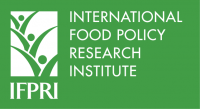
Farmers confront a number of risks every day, and this is especially true of farmers in developing countries. Rural livelihoods and welfare can be significantly impacted by everything from drought to household illness. And while many financial instruments exist that can help manage risk, in many developing rural areas, households do not have access to these mechanisms.
A new discussion paper released by IFPRI in March evaluates the effectiveness of four such financial instruments – weather insurance and three types of savings plans – in improving the welfare of rural households, as well as how men and women view and use each instrument.
The studies took place in Burkina Faso and Senegal, two countries where men’s and women’s spheres of activities, and thus the risks they face, are still quite separate. While climate risks such as drought affect both men and women equally due to dependence on agriculture, West Africa’s high fertility rate means that women face additional health risks throughout their child-bearing years. Women are also likely to be more involved with caring for their children on a day-to-day basis. Both of these points suggest that women will likely be more concerned with and affected by household health issues.
The study randomly offered a total of 806 farmers in Burkina Faso and Senegal both US$12 and one of four financial products: a weather index insurance plan sponsored by an international NGO; a home-based savings plan for agricultural inputs; a savings plan for emergencies that was managed by the treasurer of a local farmers’ group or savings and credit association; or a savings plan for agricultural input investment managed by the same treasurer. All individuals were members of a farmer group or rotating savings and credit association (ROSCA).
The authors found that men and women did indeed choose different products, supporting the idea that the risks faced (or perceived to be faced) do differ by gender. Men more often chose the weather insurance plan, while more women chose the emergency savings fund. The authors hypothesize that women’s lower take-up of insurance products could be explained by the fact that women see themselves as being more at risk from complications during childbirth and from lost income due to caring for sick children. As these risks are not covered by the weather index insurance products, women may see emergency savings accounts as their safest bet.
However, the study also found that the insurance product more successfully encouraged agricultural investment than did any of the savings plans. Farmers who chose the insurance plan spent more money on agricultural inputs and used more fertilizer, leading to higher agricultural yields. This finding suggests that over a longer period of time, if men and women elect to use different types of financial products, it could result in different welfare outcomes. By preferring other financial instruments like savings plans over weather insurance plans, women could find themselves at a disadvantage in terms of farm income and agricultural productivity. So as demand for financial instruments to manage risk grows in developing countries, it will be important to make sure that the design of future products takes into account the different risks faced by men and women.

